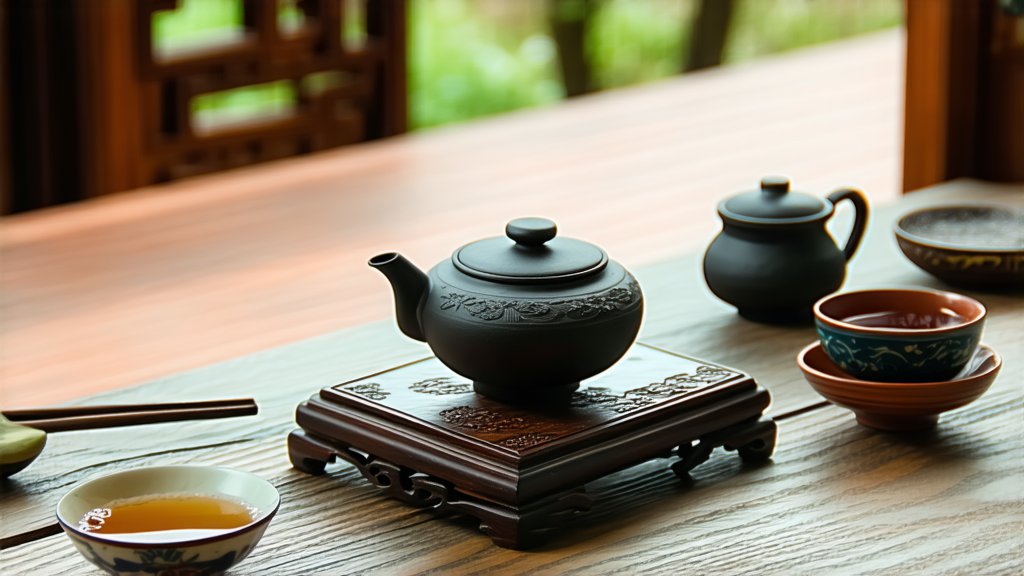
In the vast tapestry of Chinese tea culture, few varieties stand out as vividly as Keemun Black Tea. This exquisite tea, originating from the picturesque Huangshan Mountain region in Anhui Province, has carved a niche for itself both within China and on the global stage. Its history, production methods, variety, and distinctive flavor profile make it an essential subject of study for any aficionado of tea.
Historical Background
Keemun Black Tea, also known as Qimen Black Tea, traces its roots back to the Tang Dynasty (618-907 AD). However, it wasn't until the 19th century that this tea gained international acclaim. The name "Keemun" is derived from the city of Qimen County, where the tea was primarily produced and traded. During the late Qing Dynasty, Keemun became one of the most popular black teas in British aristocratic circles, earning it the moniker "Prince of Teas." Its journey across continents not only spread its delightful flavors but also cemented its status as an emblematic symbol of Chinese tea heritage.
Varieties
Keemun Black Tea is available in several grades, each offering unique characteristics. The primary types include:
-
Special Grade (Tse Chuan): This is the highest quality Keemun tea, made from young leaves and tips. It features a smooth texture, rich aroma, and a slightly sweet aftertaste.
-
Grade One (Yi Chuan): Slightly lower in quality than Tse Chuan, this variety still maintains high standards. It offers a full-bodied taste with hints of orchid and fruity undertones.
-
Grade Two (Er Chuan): More robust and less delicate compared to higher grades, Er Chuan is ideal for blending with other teas or adding milk and sugar.
-
Grade Three (San Chuan): Often used for making brick tea or as a base for various blends due to its strong flavor and affordability.
Each grade serves different purposes and caters to diverse palates, showcasing the versatility of Keemun Black Tea.
Production Process
The craftsmanship behind Keemun Black Tea is a meticulous process that involves several critical steps:
-
Withering: Freshly picked leaves are spread out in thin layers to wilt under natural sunlight or in controlled environments. This step reduces moisture content and softens the leaves.
-
Rolling: The wilted leaves are then rolled either by hand or using machines. This step breaks down cell walls, releasing enzymes that start the oxidation process.
-
Oxidation: The rolled leaves are left to oxidize, a process during which they turn dark brown or black. This transformation is crucial for developing the tea’s characteristic flavor and aroma.
-
Firing: After oxidation, the leaves are dried in bamboo baskets over charcoal fires. This imparts a distinct smokiness to the tea, a hallmark of Keemun Black Tea.
-
Sorting and Grading: Finally, the dried leaves are sorted based on size, shape, and quality, ensuring consistency in each batch produced.
This intricate process requires skillful hands and keen attention to detail, reflecting the artisanal nature of Chinese tea production.
Tasting Keemun Black Tea
To truly appreciate Keemun Black Tea, one must engage in a mindful tea ceremony that highlights its nuanced flavors. Here’s a guide to savoring this exceptional brew:
-
Preparation: Use freshly drawn, cold water and bring it to a boil. Let it cool slightly before pouring over the tea leaves. For Special Grade Keemun, use about 3 grams of leaves per 150 ml of water.
-
Steeping: Pour the hot water over the leaves and let it steep for 3-5 minutes, depending on your preferred strength. Avoid oversteeping, as it can result in bitterness.
-
Observation: As the tea steeps, observe the color transformation from light golden to a deep amber hue. The aroma should be rich and inviting, often described as having notes of orchid, fruit, and a subtle smokiness.
-
Sipping: Take your first sip slowly, allowing the tea to coat your palate. Notice the initial burst of flavor, followed by a smooth, rounded finish. High-quality Keemun will leave a sweet aftertaste that lingers pleasantly.
-
Appreciation: Reflect on the complexity and balance of the tea. Each sip should reveal new dimensions of flavor, making the experience both meditative and invigorating.
Modern Relevance and Global Influence
In contemporary times, Keemun Black Tea continues to be a beloved choice among tea enthusiasts worldwide. Its adaptability makes it suitable for various preparations, from traditional straight tea to creative concoctions like chai lattes and cocktails. Moreover, its health benefits—including antioxidant properties and potential stress relief—have contributed to its growing popularity in wellness circles.
Internationally, Keemun Black Tea has found a place in gourmet tea shops, fine dining menus, and luxury hotels, further solidifying its reputation as a premium tea. Its presence at tea auctions and international tea festivals underscores its enduring appeal and cultural significance.
Conclusion
Keemun Black Tea is more than just a beverage; it is a testament to centuries of tea cultivation and refinement. From its storied past to its modern-day allure, this tea encapsulates the essence of Chinese tea culture. Whether enjoyed alone or shared among friends, Keemun Black Tea offers a moment of tranquility and a bridge to understanding one of the world's oldest and most cherished traditions.